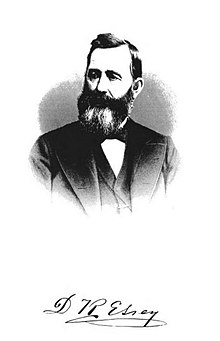메시에 3
Messier 3| 메시에 3 | |
|---|---|
 산개자리의 구상 성단 메시에 3 | |
| 관찰 데이터(J2000 epoch) | |
| 학급 | VI[1] |
| 콘스텔레이션 | 케네스 베나티 |
| 적경 | 13h 42m 11.62s[2] |
| 적위 | +28° 22′ 38.2인치[2] |
| 거리 | 33.9kly(10.4kpc)[3] |
| 겉보기 등급 (V) | 6.39[4] |
| 외관 치수(V) | 18′.0 |
| 물리적 특성 | |
| 절대 등급 | -8.93 |
| 덩어리 | 4.5×105[5] M☉ |
| 반지름 | 90리 |
| 조석 반지름 | 113 ly (30 pc)[mean][6] |
| 금속성 | / { } / { \ { H } \} \ { = - 1 . 34[7] dex |
| 예상 연령 | 11.39 Gyr[7] |
| 기타 명칭 | NGC 5272[8] |
메시에 3(M3, NGC 5272)은 북쪽 개똥벌레자리에 있는 구상 성단이다.
검출
그것은 [9]1764년 5월 3일에 발견되었고, 샤를 메시에가 직접 발견한 최초의 메시에 물체였다.메시에는 원래 이 물체를 별이 없는 성운으로 착각했다.이 실수는 [10]1784년경 윌리엄 허셜에 의해 별이 분해된 후에 수정되었다.그 이후로, 그것은 가장 잘 연구된 구상 성단 중 하나가 되었다.1913년 미국 천문학자 솔론 어빙 베일리가 이 성단의 비정상적으로 큰 변광성 종족에 대한 확인을 시작했으며,[11] 2004년까지 새로운 변광성 성단이 계속해서 확인되고 있다.
가시성
많은 아마추어 천문학자들은 메시에 13에 이어 [1]이 성단을 가장 훌륭한 북쪽 구상 성단 중 하나로 꼽는다.M3는 겉보기 등급 6.2로 [8]시야가 어두운 환경에서도 육안 표적이 되기 어렵다.그러나 중간 크기의 망원경을 사용하면, 이 성단은 심각한 빛으로 오염된 하늘에서도 흐린 얼룩으로 보일 수 있으며, 더 어두운 조건에서도 더 정의될 수 있습니다.아크투루스(α Boötis)와 코르 카롤리(α Canum Venaticorum)를 연결하는 북서쪽 선을 거의 정확히 절반만 보면 알 수 있습니다.지름 25cm(9.8인치)의 망원경을 사용하는 이 성단은 직경이 약 6분인 밝은 중심핵을 가지고 있으며, 그 [1]두 배에 이른다.
특성.
이 성단은 가장 크고 밝은 성단 중 하나이며 약 50만 개의 [10]별들로 이루어져 있습니다.그것은 114억 년 [7]된 것으로 추정된다.이 행성은 지구로부터 [12]32,600광년(10.0kpc) 떨어진 곳에 위치해 있다.
메시에 3은 은하면에서 31.6kly(9.7kpc), 은하수 중심에서 약 38.8kpc(11.9kpc) 떨어져 있어 상당히 고립되어 있습니다.이 성단에는 274개의 알려진 변광성이 포함되어 있으며, 구상 성단에서 가장 많이 발견됩니다.여기에는 133개의 RR Lyrae 변수가 포함되며, 그 중 약 3분의 1은 장기 변조의 Blazhko 효과를 나타낸다.천문학자들이 금속성이라고 부르는 수소와 헬륨을 제외한 원소들의 전체적인 풍부함은 -1.34에서 -1.50덱스 사이입니다.이 값은 태양에 대한 상대적인 풍요의 대수를 나타내며, 실제 비율은 태양 풍요의 3.2-4.6%이다.메시에 3은 "금속 풍부"으로 여겨지는 우스터호프 I형 성단의 원형입니다.즉, 구상 성단의 경우 메시에 3에는 상대적으로 무거운 [13]원소가 풍부하게 포함되어 있습니다.
레퍼런스
- ^ a b c Thompson, Robert Bruce; Thompson, Barbara Fritchman (2007), Illustrated guide to astronomical wonders, DIY science O'Reilly Series, O'Reilly Media, Inc., p. 137, ISBN 978-0-596-52685-6.
- ^ a b Goldsbury, Ryan; et al. (December 2010), "The ACS Survey of Galactic Globular Clusters. X. New Determinations of Centers for 65 Clusters", The Astronomical Journal, 140 (6): 1830–1837, arXiv:1008.2755, Bibcode:2010AJ....140.1830G, doi:10.1088/0004-6256/140/6/1830.
- ^ Paust, Nathaniel E. Q.; et al. (February 2010), "The ACS Survey of Galactic Globular Clusters. VIII. Effects of Environment on Globular Cluster Global Mass Functions", The Astronomical Journal, 139 (2): 476–491, Bibcode:2010AJ....139..476P, doi:10.1088/0004-6256/139/2/476, hdl:2152/34371.
- ^ Delessandro, Emanuele; Schiavon, Ricardo P.; Rood, Robert P.; Ferraro, Francesco R.; Sohn, Sangmo T.; Lanzoni, Barbara; O'Connell, Robert W. (September 2012), "Ultraviolet Properties of Galactic Globular Clusters with Galex. II. Integrated Colors", The Astronomical Journal, 144 (5): 126–139, arXiv:1208.5698, Bibcode:2012AJ....144..126D, doi:10.1088/0004-6256/144/5/126.
- ^ Marks, Michael; Kroupa, Pavel (August 2010), "Initial conditions for globular clusters and assembly of the old globular cluster population of the Milky Way", Monthly Notices of the Royal Astronomical Society, 406 (3): 2000–2012, arXiv:1004.2255, Bibcode:2010MNRAS.406.2000M, doi:10.1111/j.1365-2966.2010.16813.x. 질량은 표 1의 M부터이다PD.
- ^ Brosche, P.; Odenkirchen, M.; Geffert, M. (March 1999). "Instantaneous and average tidal radii of globular clusters". New Astronomy. 4 (2): 133–139. Bibcode:1999NewA....4..133B. doi:10.1016/S1384-1076(99)00014-7.
- ^ a b c Forbes, Duncan A.; Bridges, Terry (May 2010), "Accreted versus in situ Milky Way globular clusters", Monthly Notices of the Royal Astronomical Society, 404 (3): 1203–1214, arXiv:1001.4289, Bibcode:2010MNRAS.404.1203F, doi:10.1111/j.1365-2966.2010.16373.x.
- ^ a b "M 3". SIMBAD. Centre de données astronomiques de Strasbourg. Retrieved 2006-11-15.
{{cite web}}: CS1 유지보수: 포스트스크립트(링크) - ^ Machholz, Don (2002), The observing guide to the Messier marathon: a handbook and atlas, Cambridge University Press, ISBN 978-0-521-80386-1.
- ^ a b Garner, Rob (2017-10-06). "Messier 3". NASA. Retrieved 2018-04-13.
- ^ Valcarce, A. A. R.; Catelan, M. (August 2008), "A semi-empirical study of the mass distribution of horizontal branch stars in M 3 (NGC 5272)", Astronomy and Astrophysics, 487 (1): 185–195, arXiv:0805.3161, Bibcode:2008A&A...487..185V, doi:10.1051/0004-6361:20078231.
- ^ Cacciari, C.; Corwin, T. M.; Carney, B. W. (January 2005). "A Multicolor and Fourier Study of RR Lyrae Variables in the Globular Cluster NGC 5272 (M3)". The Astronomical Journal. 129 (1): 267–302. doi:10.1086/426325. ISSN 0004-6256.
- ^ Cacciari, C.; Corwin, T. M.; Carney, B. W. (January 2005), "A Multicolor and Fourier Study of RR Lyrae Variables in the Globular Cluster NGC 5272 (M3)", The Astronomical Journal, 129 (1): 267–302, arXiv:astro-ph/0409567, Bibcode:2005AJ....129..267C, doi:10.1086/426325.
「 」를 참조해 주세요.
외부 링크
- M3의 SEDS Messier 페이지
- M3, 은하 구상 성단 데이터베이스 페이지
- M3 사진 상세 어두운 분위기
- Merrifield, Michael. "M3 – Globular Cluster". Deep Sky Videos. Brady Haran.
- WikiSky의 Messier 3: DSS2, SDSS, GALEX, IRAS, Hydrogen α, X-Ray, Astrophoto, 스카이 맵, 기사 및 이미지
![{\displaystyle {\begin{smallmatrix}\left[{\ce {Fe}}/{\ce {H}}\right]\end{smallmatrix}}}](https://wikimedia.org/api/rest_v1/media/math/render/svg/4c0821bd80891e071c08e7c7ee8e022baedf522c)




